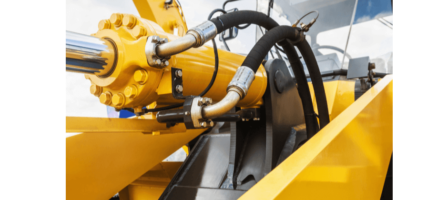INTRODUCTION TO HYDRAULICS AND PNEUMATICS
Introduction to Hydraulics and Pneumatics
Hydraulics and pneumatics are two essential branches of fluid power engineering that play a significant role in various industrial applications. These technologies are based on the use of pressurized fluids, either liquids (hydraulics) or gases (pneumatics), to transmit power and control mechanical systems. In this article, we will provide an overview of hydraulics and pneumatics, highlighting their key principles, advantages, and applications.
Hydraulics: Power Through Liquid
Hydraulics is the branch of fluid power engineering that utilizes incompressible fluids, typically oil, to transmit power. The fundamental principle behind hydraulics is Pascal’s law, which states that when pressure is applied to a confined fluid, it is transmitted equally in all directions. This allows for the development of powerful hydraulic systems that can generate high forces and precise control.
Key Points in Hydraulics:
- Incompressible Fluid: Hydraulics uses incompressible fluids, such as hydraulic oil, to transmit power. This property ensures that changes in volume are minimal, providing consistent force transmission.
- High Force Generation: Hydraulic systems can generate significant force, making them ideal for heavy-duty applications like construction equipment and manufacturing machinery.

- Precise Control: The use of hydraulic valves and actuators allows for precise control of speed and position, making hydraulics suitable for applications requiring accuracy.
- Leakage Concerns: Hydraulics systems can be prone to leakage, which requires regular maintenance and monitoring.
Pneumatics: Power Through Air
Pneumatics, on the other hand, harnesses the power of compressed air or other gases to perform mechanical work. It is based on Boyle’s law, which describes the inverse relationship between pressure and volume in a gas. Pneumatic systems are widely used for their simplicity, cost-effectiveness, and versatility.
Key Points in Pneumatics:
- Compressible Fluid: Pneumatics uses compressible gases, typically air, which can be easily stored and transported in compressed form.
- Simplicity: Pneumatic systems are relatively straightforward, consisting of compressors, actuators, and control valves. This simplicity makes them cost-effective and easy to maintain.
- Versatility: Pneumatic systems are highly adaptable and find applications in various industries, including automation, packaging, and medical devices.
- Limited Force: Pneumatics provides lower force compared to hydraulics, which makes it suitable for lighter loads and applications that do not require high precision.

Advantages of Fluid Power
Both hydraulics and pneumatics offer distinct advantages in different applications:
Advantages of Hydraulics:
- High Force Output: Hydraulics excel in applications that demand powerful force generation, such as lifting heavy loads and controlling large machinery.
- Precise Control: Hydraulic systems allow for precise control over motion and force, making them suitable for tasks requiring accuracy.
- Durability: Hydraulics systems are known for their durability and resilience in harsh environments.
Advantages of Pneumatics:
- Simplicity and Cost-Effectiveness: Pneumatic systems are cost-effective to install and maintain, and their simplicity is an asset in many applications.
- Clean Operation: Compressed air is clean and does not produce oil-based contaminants, making pneumatics ideal for industries with strict cleanliness requirements.
- Versatility: Pneumatic systems are highly versatile and adaptable, making them suitable for a wide range of applications.
Applications of Hydraulics and Pneumatics
Hydraulics and pneumatics are utilized in numerous industries and applications:
Hydraulics Applications:
- Construction Machinery: Hydraulic systems power excavators, cranes, and bulldozers, providing the force needed for heavy construction work.
- Manufacturing Equipment: Hydraulic presses, injection molding machines, and metal forming equipment rely on hydraulics for precision and power.
- Aerospace: Aircraft landing gear, flight control systems, and braking systems often incorporate hydraulic components.
Pneumatics Applications:
- Manufacturing Automation: Pneumatic actuators and control systems are prevalent in assembly lines and robotics for pick-and-place operations.
- Food Processing: Pneumatics are used in packaging and sorting equipment in the food industry due to their cleanliness and versatility.
- Medical Devices: Many medical devices, such as ventilators and dental chairs, rely on pneumatic systems for their smooth and precise operation.
In conclusion, hydraulics and pneumatics are indispensable technologies that power a wide array of machinery and systems in various industries. Understanding the fundamental principles and advantages of these fluid power systems is crucial for engineers and technicians working in fields where the efficiency and precision of mechanical operations are essential. Whether it’s the brute force of hydraulics or the simplicity of pneumatics, these technologies continue to shape modern industrial processes and automation.


